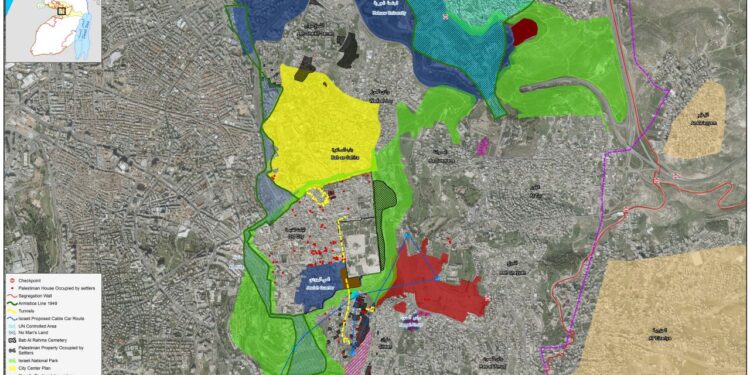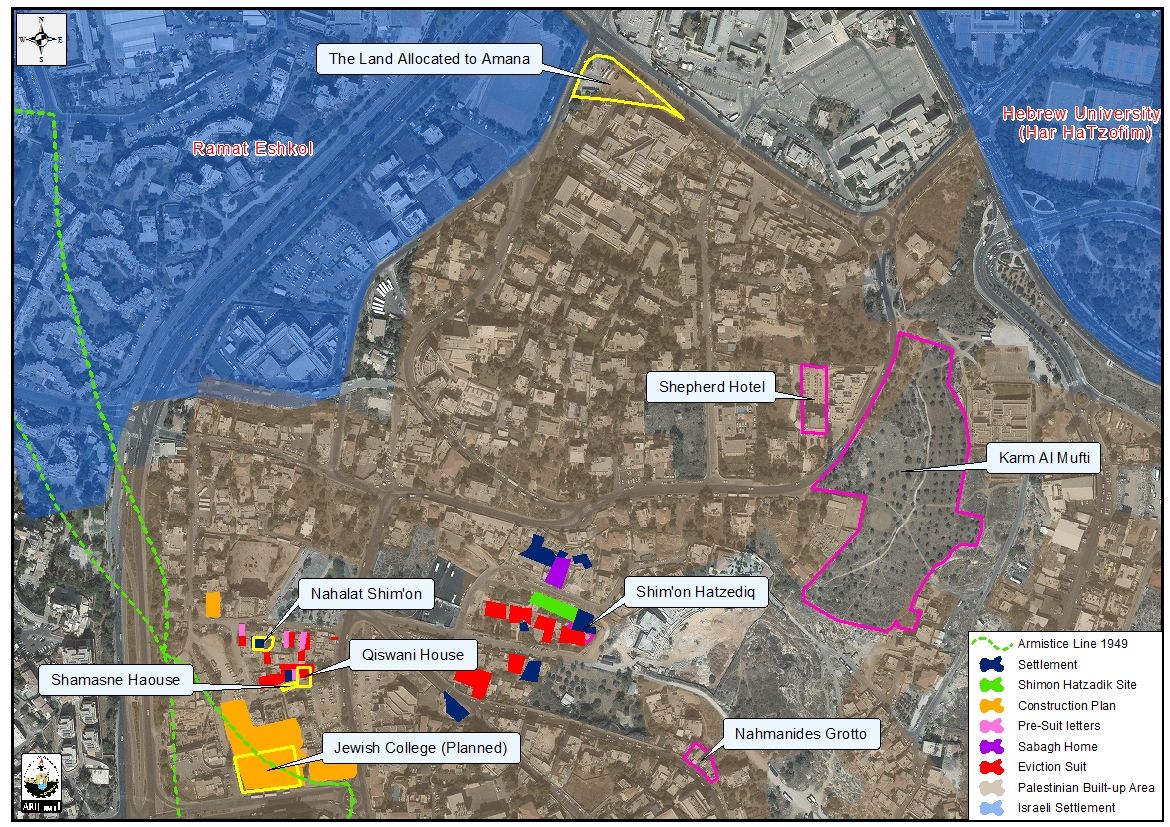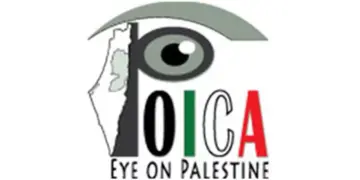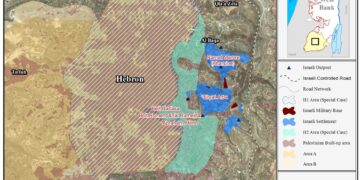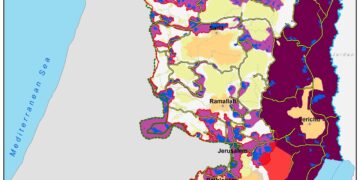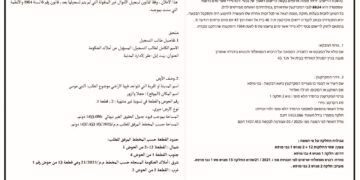Introduction
Sheikh Jarrah, a historic Palestinian neighborhood in occupied East Jerusalem, has become symbolic of the ongoing struggle over land, identity, and sovereignty in the city. Since the Israeli occupation of East Jerusalem in 1967, the area has been at the heart of legal disputes and forced evictions that reflect the broader dynamics of dispossession across the occupied Palestinian territory. The conflict here is not merely a local property dispute; it symbolizes a systemic attempt to reshape the demography of Jerusalem, undermine Palestinian presence, and entrench Israeli settlement expansion.
The Core of the Dispute
At the heart of Sheikh Jarrah’s crisis lies a deeply unbalanced and discriminatory legal and political framework,
- Palestinian Residents: Dozens of Palestinian families, many originally displaced during the 1948 Nakba, have lived in Sheikh Jarrah since the 1950s under arrangements facilitated by Jordan and UNRWA. For these families, Sheikh Jarrah is not just a neighborhood; it is the last asylum after decades of dispossession.
- Israeli Settler Claims: Jewish settler organizations, invoking claims of pre-1948 Jewish ownership, have pursued legal action to evict these families. These claims are underpinned by Israeli legislation that grants Jews the right to reclaim properties lost in 1948 while categorically denying Palestinians the reciprocal right to reclaim their homes and lands lost in that same war.
- Legal Disparity: This framework has tilted court rulings in favor of settlers. The Israeli judiciary, despite occasional delays, has largely enabled eviction orders, transforming the legal arena into a tool for demographic engineering rather than impartial justice.
Escalating Tensions and International Concern
The forced evictions and threats of displacement in Sheikh Jarrah have repeatedly triggered protests, violent confrontations, and widespread international attention. The United Nations and international legal experts, including the International Commission of Jurists (ICJ), have warned that such evictions may constitute violations of international humanitarian law and could rise to the level of war crimes under the Fourth Geneva Convention.
The 2021 protests in Sheikh Jarrah sparked a wave of solidarity demonstrations across Palestine and worldwide, highlighting the neighborhood’s symbolic role in the Palestinian struggle for self-determination. These protests also revealed the broader strategy of Israeli authorities to consolidate control over East Jerusalem by fragmenting Palestinian neighborhoods and fostering settler enclaves.
A New Phase of Displacement: Plans to Demolish Homes in Sheikh Jarrah
The crisis in Sheikh Jarrah has entered a threatening new phase after the Jerusalem Municipality, with direct support from the Israeli government, unveiled plans to establish a large settlement enclave of about 340 housing units in the heart of the neighborhood, on the ruins of Palestinian homes. The project requires the demolition of nearly 40 residential buildings and the forcible displacement of dozens of Palestinian families, a move that reflects Israel’s ongoing demographic engineering policy aimed at consolidating an artificial Jewish majority in the occupied city.
This plan echoes the precedent of 1967, when Israel demolished the historic Magharebeh Quarter just days after occupying East Jerusalem in order to expand the plaza leading to the Western Wall. Today, the same scenario is being repeated in Sheikh Jarrah, making it only the second time since 1967 that Israel seeks to erase an entire Palestinian neighborhood in East Jerusalem and replace it with a Jewish settlement. This represents a clear manifestation of the systematic nature of the settlement enterprise as a tool to uproot Palestinians from the heart of Jerusalem.
Even more alarming is the fact that ownership of the land designated for the project was transferred secretly and fraudulently to Israel’s so-called “General Custodian of Absentee Properties,” a move revealed only in 2021. Palestinian residents of the targeted area were neither notified nor given the right to challenge the registration, reflecting the institutional exclusion that characterizes Israel’s land and property policies in Jerusalem. This pattern is not isolated; it is repeated in other neighborhoods such as Silwan and Issawiya, where discriminatory laws and pretexts of “urban planning” are systematically used to Judaize the city and strip Palestinians of their homes.
Accordingly, what is unfolding in Sheikh Jarrah is not a mere local property dispute but part of a broader settlement project designed to reshape the demographic and urban landscape of East Jerusalem in line with long-term Israeli objectives: to encircle Palestinian presence, shrink its geographic scope, and empty Arab neighborhoods of their residents. This trajectory starkly violates international law, particularly Article 49 of the Fourth Geneva Convention, which prohibits the forcible transfer of populations in occupied territories.
Sheikh Jarrah: From the 1967 Occupation to Systematic Settlement
Since Israel’s occupation of the West Bank, including East Jerusalem, in June 1967, Sheikh Jarrah has become one of the most prominent flashpoints in the struggle over identity and sovereignty in the city. Immediately after the occupation, Israeli authorities began implementing settlement plans targeting Sheikh Jarrah. In 1968, the settlement of Ma’alot Dafna was established on lands confiscated from the neighborhood, making it one of the first Israeli settlements in East Jerusalem.
Since the 1970s, Jewish settler organizations such as “Nahalat Shimon” and “Ateret Cohanim” have used Israeli courts to seize Palestinian homes in Sheikh Jarrah. According to United Nations reports, today more than 70 Palestinian families (around 300 individuals) face the risk of forcible displacement from their homes in Karm al-Jaouni, a chilling repetition of the Nakba of 1948, but this time in the very heart of Jerusalem.
Expanding Settlement Projects
Settlement activity has not been limited to seizing individual homes but has expanded into larger projects. In the 1990s, Israeli authorities confiscated lands in the Mufti’s Palace compound (the former residence of Haj Amin al-Husseini) and advanced plans to build public buildings and Jewish synagogues to reinforce the settlement character of the area. Statistics indicate that settler organizations have submitted plans for the construction of more than 200 additional settlement units in Sheikh Jarrah, alongside religious and educational institutions.
Settler Violence
Beyond legal and military confiscations, settler violence against Palestinian residents has escalated. Dozens of physical assaults and property vandalism cases have been documented in the neighborhood, alongside daily harassment such as restricting residents’ access to certain roads, installing surveillance cameras, and imposing heavy military control. These measures have created a hostile environment designed to force Palestinians to leave.
Map 1: Israeli Settlement Plans in Ash Sheikh Jarrah neighborhood- Jerusalem
International and Legal Dimensions
The United Nations and the European Union consider the displacement policies in Sheikh Jarrah to be direct violations of Article 49 of the Fourth Geneva Convention, which prohibits the forcible transfer of populations under occupation. Moreover, the International Court of Justice (ICJ), in its 2004 advisory opinion on the Separation Wall, affirmed the illegality of any Israeli measures that alter the demographic character of East Jerusalem.
Despite repeated international condemnations, Israeli authorities continue to support settler organizations both financially and legally, reinforcing their grip on the neighborhood. These measures are part of a larger project to impose a Jewish demographic majority in the holy city at the expense of its indigenous Palestinian population.
Consequences and Broader Implications
The Sheikh Jarrah plan represents far more than a local neighborhood argument over land ownership and residency rights; it is a strategic tool within Israel’s broader project of demographic engineering in Jerusalem. By displacing Palestinian families and fragmenting their social fabric, the plan aims to consolidate a Jewish demographic majority in the city. Beyond its immediate impact, the scheme carries dangerous legal and political implications: it threatens to establish a precedent for the erasure of entire Palestinian neighborhoods under the pretext of “urban planning.” Such procedures are not only an assault on Palestinian rights and presence in Jerusalem but also a recipe for renewed instability. The memory of the 2021 uprising serves as a stark reminder that attempting to manipulate Jerusalem complicated and sensitive balance can spark widespread turmoil with far-reaching regional repercussions, given the city’s significance to Palestinian identity and the broader frame of the conflict.
Recommendations & Conclusion
Addressing the crisis in Sheikh Jarrah requires a multi-layered strategy that combines international accountability, legal advocacy, diplomatic pressure, and public mobilization. The UN and other international bodies must intensify monitoring and explicitly recognize the plan as a clear violation of international law, while states should consider imposing targeted sanctions on individuals and institutions directly complicit in settlement construction and land confiscation.
At the same time, Palestinian families urgently need sustained legal support to challenge eviction orders in both domestic and international courts, supported by expanded documentation efforts from civil society organizations to strengthen future proceedings before the International Criminal Court. Diplomatic actors; including the EU, the United States, and Arab states, should make any possible future political engagement with Israel conditional on halting forced evictions and settlement expansion, while also affirming that Sheikh Jarrah is inseparable from the broader issue of Jerusalem as the capital of a future Palestinian state. Parallel to these efforts, global civil society must magnify Sheikh Jarrah’s story, framing it not as a narrow property dispute but as part of a systematic policy of displacement, and connecting it to other threatened neighborhoods such as Silwan, Al-Bustan, and Batan al-Hawa. Only through this integrated tactic, can the international community confront the Israeli premeditated displacement agenda and defend the Palestinian presence in Jerusalem.
Sheikh Jarrah is far more than a localized dispute; it represents a deliberate policy of displacement, settlement expansion, and demographic reengineering at the heart of East Jerusalem. The threatening demolition of Palestinian homes to make way for a new settlement enclave marks a critical juncture, carrying with it the threat of erasing an entire neighborhood and reshaping the city’s social and political fabric. For Palestinians, Sheikh Jarrah epitomizes the volatile of their very existence in Jerusalem; for Israel, it is a calculated maneuver to entrench control and cement demographic dominance; and for the international community, it is a litmus test of whether the principles of international law and justice can prevail over political reasoning. Upholding Sheikh Jarrah, therefore, is not simply about protecting a single neighborhood; it is about preserving the possibility of a just and overall sustainability of peace in Jerusalem itself.
Prepared by:
The Applied Research Institute – Jerusalem


